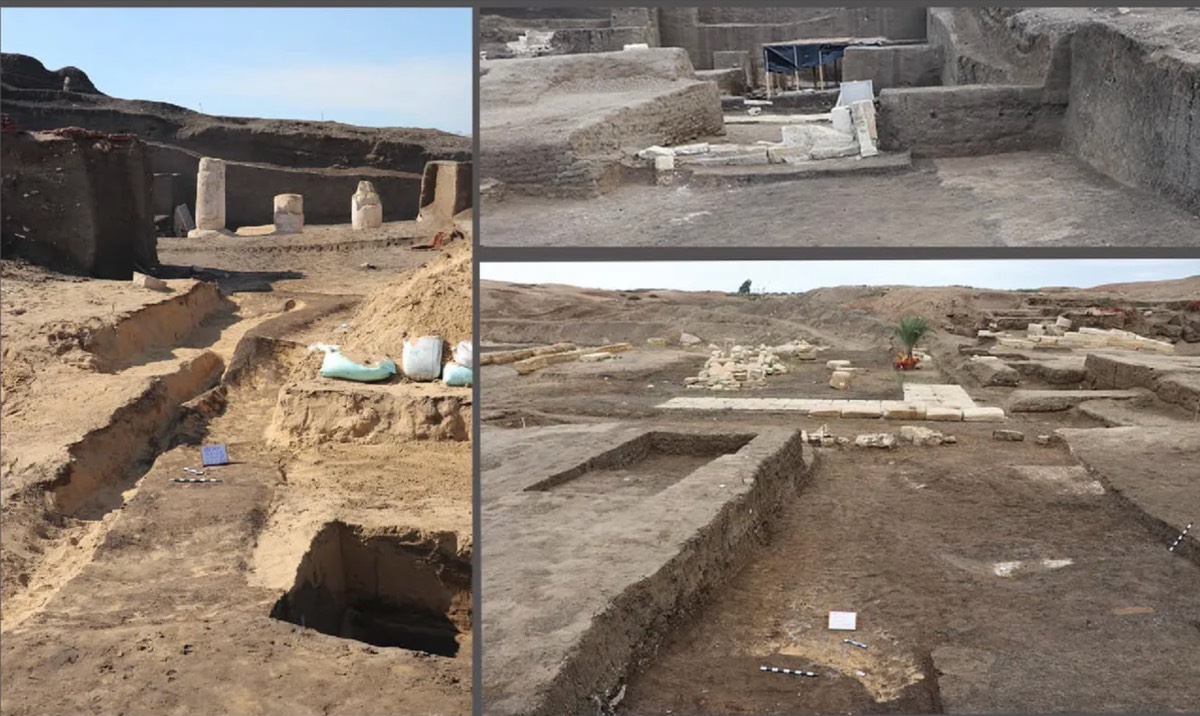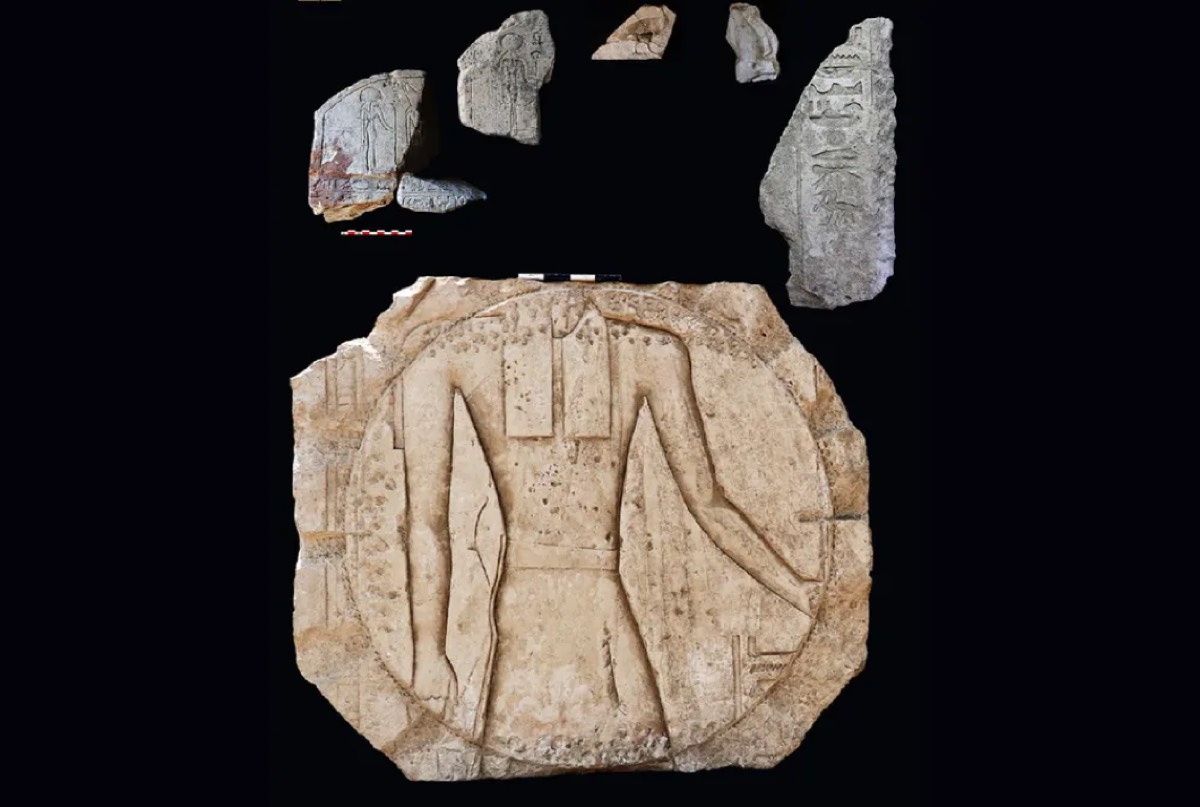
Credit:
Egyptian Ministry of Tourism and Antiquities
An overview of the excavation site at Tell El-Faraeen, where archaeologists uncovered the first known ancient Egyptian observatory.
Credit:
Egyptian Ministry of Tourism and Antiquities
The approximately 9,150-square-foot structure had a traditional gateway at the east entrance and a carving facing east (toward the rising sun). Within the hall were images of various Egyptian deities typically associated with the sky, notably Horus in the form of a falcon, who is also the son of Wadjet. The team found numerous smaller artifacts associated with ritualistic practices as well, such as a bronze statue of Osiris, amphorae covers, pottery, and a beaded necklace (menat) often worn as a protective amulet.
All this seemed consistent with the structure having been a temple—except for the unusual placement of the pillars at the entrance. (In Egyptian monuments, pillars are often placed at the end of halls.) The team thought the trio might have been a symbolic means of dividing time into seasons or months. They also uncovered a large stone sundial used to determine sunrise, noon, and sunset, as well as an ancient Egyptian time-keeping artifact known as a merkhet—basically a bar with an attached plumb line typically used to track certain stars.
There was even the remains of what might have once been a stone observatory tower with astronomical inscriptions. “Everything we found shattered our expectations,” Hossom Ghonim, head of the expedition and director-general of Kafr El-Sheikh Antiquities told Live Science, suggesting the site had a dual role as both a spiritual and a scientific place.

